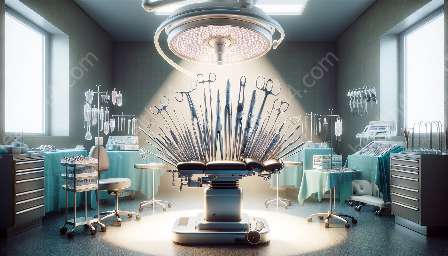When it comes to surgical procedures, ligatures play a crucial role in achieving successful outcomes. In this comprehensive guide, we'll explore the importance of ligatures, their applications, and the compatibility with surgical instruments and medical devices and equipment.
Understanding Ligatures
A ligature is a thread, suture, or wire used to secure a blood vessel or tissue during surgery. Its primary purpose is to control bleeding and facilitate tissue closure. Ligatures are essential in various surgical specialties, including general surgery, cardiovascular surgery, and orthopedic surgery.
Types of Ligatures
There are several types of ligatures, each designed for specific surgical applications. Silk, polyester, and polypropylene ligatures are commonly used for their biocompatibility and strength. Additionally, absorbable ligatures made of materials such as surgical gut or polyglycolic acid are utilized for temporary support during tissue healing.
Placement of Ligatures
The precise placement of ligatures is critical for ensuring effective hemostasis and tissue closure. Surgeons rely on specialized surgical instruments such as hemostats, forceps, and needle holders to accurately position and secure ligatures around blood vessels and tissues.
Ligature Closure Techniques
Proper closure techniques are vital for the success of ligatures. Surgeons use medical devices such as ligating clips and vascular clips to secure ligatures, especially in delicate procedures where precision is paramount. These devices assist in achieving secure closure while minimizing trauma to surrounding tissues.
Role of Surgical Instruments
Surgical instruments are indispensable for ligature placement and closure. From precision scissors and needle drivers to specialized ligature applicators, these instruments enable surgeons to manipulate ligatures with accuracy and dexterity, contributing to the overall success of surgical interventions.
Compatibility with Medical Devices & Equipment
The compatibility between ligatures, surgical instruments, and medical devices is essential for seamless surgical workflows. Advanced technologies, such as electronic cautery devices and robotic surgical systems, have revolutionized ligature placement and closure, offering enhanced precision and control.
Enhancing Surgical Outcomes
Effective ligature placement and closure are vital aspects of surgical practice. When coupled with state-of-the-art surgical instruments and advanced medical devices, surgeons can achieve optimal outcomes, promoting patient safety and postoperative recovery.


